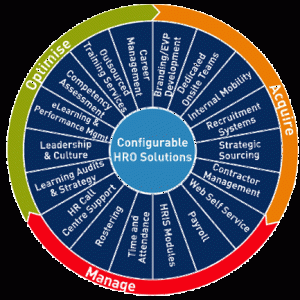
Creating a Positive Company Culture: HR Best Practices
A positive company culture is vital for the success and growth of any organization. It directly impacts employee satisfaction, productivity, and retention rates. Human Resources (HR) plays a crucial role in shaping and maintaining a positive company culture. In this article, we will explore some of the best practices HR professionals can implement to foster a positive work environment.
1. Clear Communication and Transparency
Effective communication is the foundation of a positive company culture. HR should establish open and transparent channels of communication to ensure employees are well-informed and can provide feedback. Regular team meetings, town halls, and company-wide emails can be utilized to share important updates and encourage two-way communication.
2. Employee Engagement and Recognition
An engaged workforce is more likely to be motivated, productive, and committed to the organization. HR should implement programs and initiatives to foster employee engagement, such as organizing team-building activities, providing career development opportunities, and recognizing outstanding performance. Regular employee surveys can also help gather feedback and identify areas for improvement.
3. Work-Life Balance
HR should promote work-life balance to prevent employee burnout and improve overall well-being. Introducing flexible work arrangements, encouraging employees to take regular breaks and vacations, and providing access to wellness programs can contribute to a positive work-life balance culture. Additionally, HR should support employees during challenging times by offering counseling services or flexible leave options.
4. Diversity and Inclusion
Creating a diverse and inclusive workplace is essential for fostering a positive company culture. HR should implement policies and practices that promote diversity, such as fair hiring practices, diverse interview panels, and training programs on unconscious bias. Celebrating and valuing different perspectives and backgrounds within the organization can lead to innovation and improved employee satisfaction.
5. Continuous Learning and Development
HR should provide employees with opportunities for continuous learning and development. Implementing training programs, mentorship initiatives, and sponsoring professional certifications can enhance employee skills and boost job satisfaction. Offering these learning opportunities demonstrates the organization’s commitment to employee growth, which in turn contributes to a positive company culture.
6. Well-defined Values and Ethics
A company culture built on strong values and ethics sets the tone for positive employee behavior. HR should work with management to establish clear values that align with the organization’s mission and vision. These values should be communicated consistently and reinforced through policies, codes of conduct, and ethical training. HR should also lead by example, ensuring that all employees, including senior management, adhere to these values.
7. Conflict Resolution and Employee Support
Addressing conflicts promptly and effectively is crucial for maintaining a positive work environment. HR should establish fair and unbiased procedures to resolve conflicts, ensuring that employees feel heard and supported. Offering mediation services and providing a safe space for employees to voice their concerns can help prevent conflicts from escalating and contribute to a harmonious workplace.
Conclusion
Creating a positive company culture requires a proactive and continuous effort from HR professionals. By implementing these best practices, HR can nurture an environment where employees feel valued, engaged, and motivated. A positive company culture not only enhances employee well-being but also attracts top talent and drives overall organizational success.


